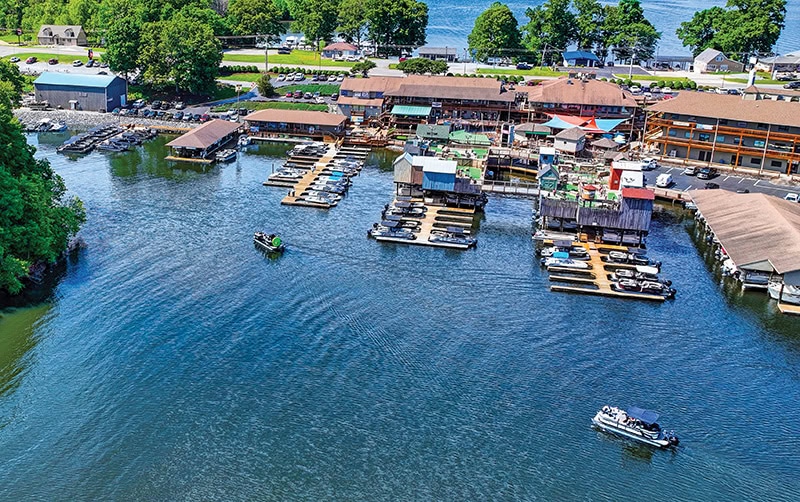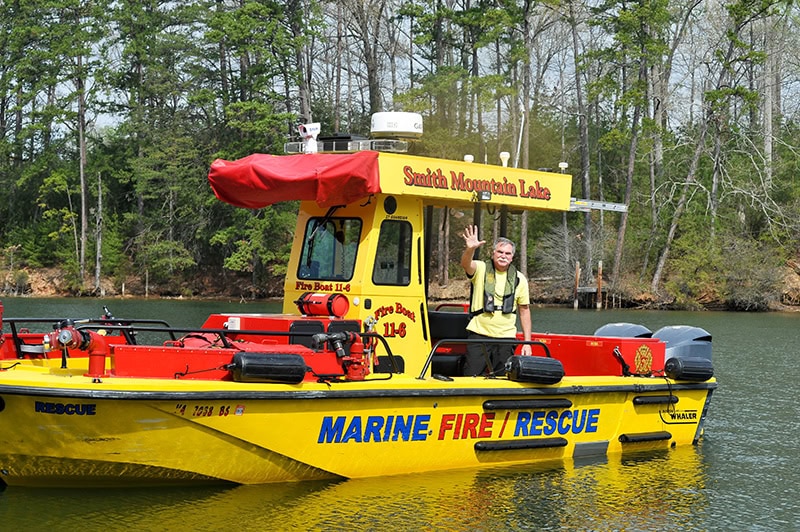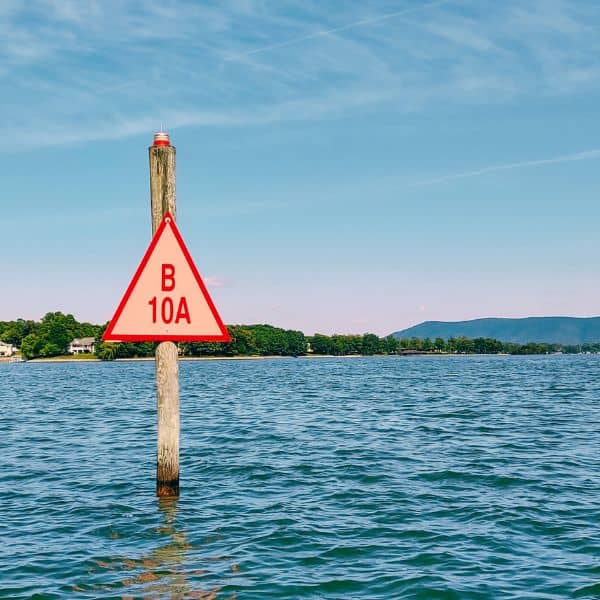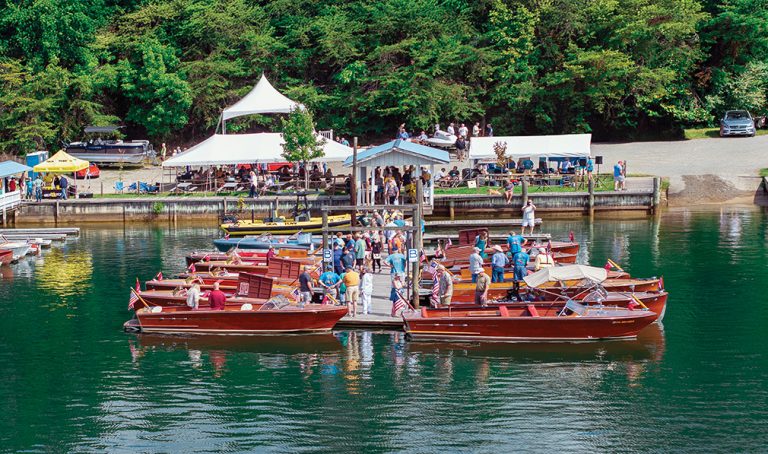How to Dock a Boat at Smith Mountain Lake: An Insider’s Guide
This page may contain affiliate links. If you click and purchase, we may earn a small commission at no extra cost to you. Read our full disclosure policy.
Many who visit or relocate to Smith Mountain Lake have little or no experience with boats. Yet the call to get out and enjoy our beautiful waterway is compelling, often leading to a boat rental or purchase—and with that comes the need to learn the ins and outs of boat docking at Smith Mountain Lake.
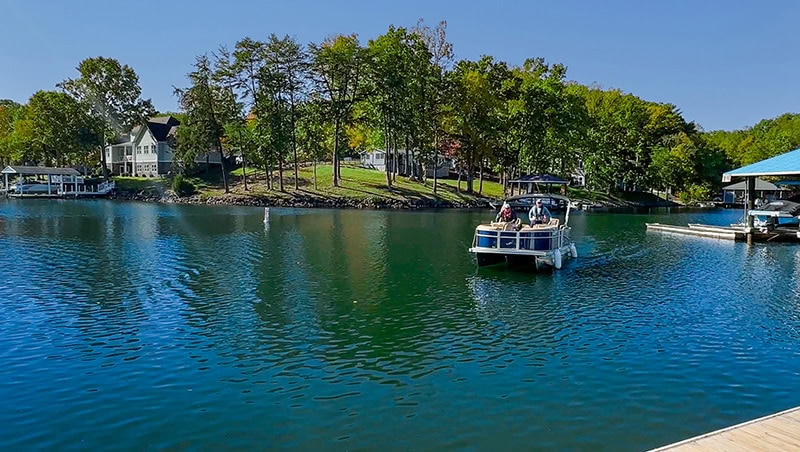
The prudent will attend an online or preferably in-person version of the Boat Virginia safety course, which is required by Virginia law and provides important education about boating safety practices, rules-of-the-waterway, navigation practices and etiquette.
As good as that training is, however, it does not provide hands-on boat handling experience.
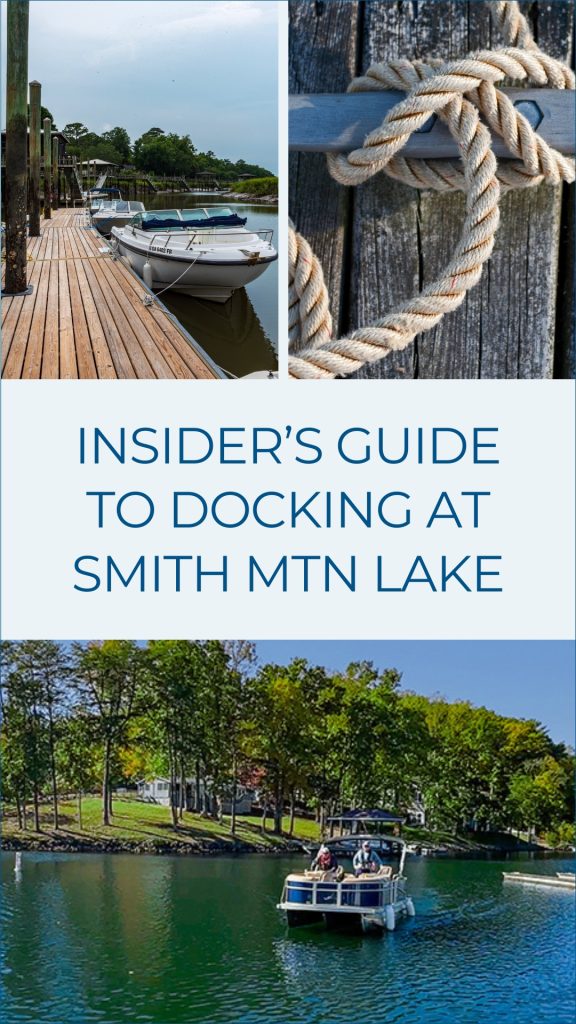
Docking 101
Click below to jump to specific tips.
Smith Mountain Lake Docking Tips
Docking is a part of every boating outing—whether you’re pulling up to a waterfront restaurant, a Smith Mountain Lake marina or friend’s floater. Feeling confident in your ability to approach and tie up smoothly can greatly reduce stress for both captain and crew, making the entire experience more enjoyable.
To help you build that confidence, we’ve compiled our top docking tips and best practices, along with a free, downloadable primer you can print and keep on board for quick reference. You’ll also find a step-by-step video tutorial featuring local boating expert and retired U.S. Navy Captain Eric Cheney.
Below are the essentials to help turn new skippers into capable dockers, as well as a step-by-step docking tutorial I filmed with local boating expert and retired Naval officer Eric Cheney.
1. Slow down and pause to get ready
Before approaching a dock, stop 50 yards or so out to affix docking lines fore and aft and position fenders on the side of the boat that will be against the dock.
Approach any dock with just enough headway for steerage, shifting between idle-speed in forward and coasting in neutral to minimize momentum. There’s always the chance you’ll bump the dock; minimal speed means minimal damage.
Remember, an outboard or stern-drive powered boat that is coasting ahead in neutral can still be steered using the lower unit as a rudder.


Fenders are typically not used when returning to a home lift as your dock corners should be permanently padded and fenders tend to snag lift cables as a boat enters its slip.
2. When possible, approach upwind at an angle
It’s always best to have any breeze slowing, not increasing, your headway. So whenever possible, maneuver your bow at least partially into a prevailing wind.
Approach a floater or other parallel dock at an angle of 30 to 40 degrees, idling toward the center of the space you plan to occupy and shifting in and out of forward to keep speed to a minimum.
As your bow nears the dock, shift to neutral and coast as you steer AWAY from the dock to “flare” your approach. Then, spin the helm TOWARD the dock and apply GENTLE reverse to pull the stern in.


If a helper on the dock wraps your bow line once around a dock cleat, you can back against it (with the wheel turned toward the dock) to pull the stern softly alongside.
3. Leave the engine running and secure lines using a cleat knot
Docking is NOT a “cut and coast” maneuver. Reverse engine thrust is used to stop headway and assist with final positioning, as detailed below.
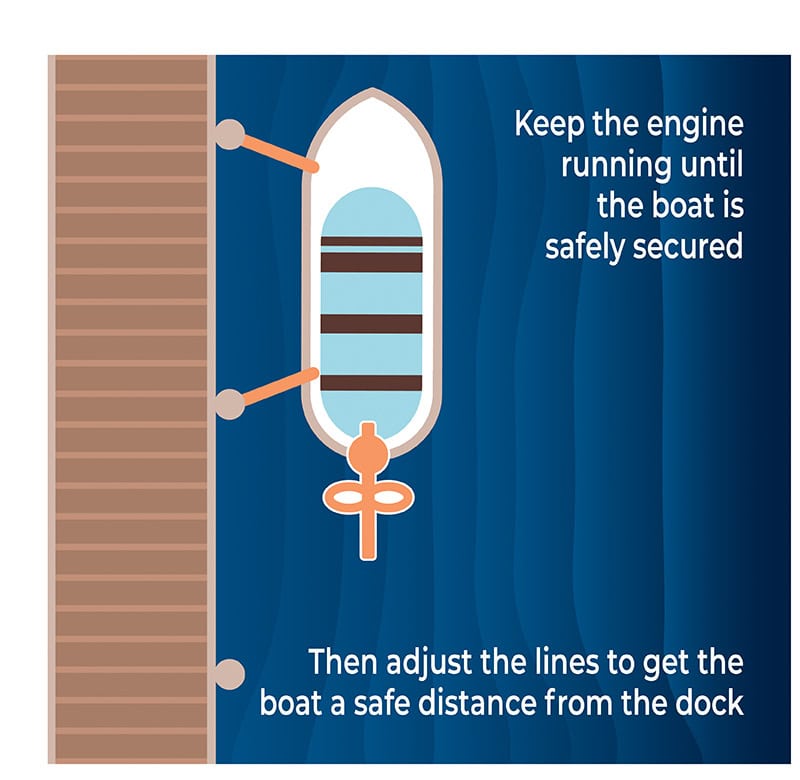
Winding excess line around a dock cleat is amateurish, unnecessary and only makes casting off more difficult. Below is an instructional video from BoatUS on how to effectively tie a cleat hitch knot.
4. Departing from dock or floater
After lines are free, back away with the wheel turned AWAY from the dock. This will pull the stern out, and the bow will follow. If pulling away bow first, push off the dock to allow for stern swing as you steer slightly away from the floater.

Be sure to stow your fenders after you leave the dock. Leaving them dangling overboard pegs you as a novice boater.
5. Returning to your home slip
Point the bow into the slip opening, then STEER the stern in to follow. Gentle reverse can be used to PULL the stern in the direction you turn the wheel.
Especially with pontoons and tritoons, post a crew member up front (but inside the railing!) with a boat hook to guide your bow into the opening. Slow and easy does it. In a crosswind, approach at an angle, as against the wind as possible, and STEER the stern to follow the bow into the slip.

Use a ring of black tape on one of the lift’s forward centering poles to mark the float-off level for your boat. When you return, make sure that ring is still under water (water level may have dropped during your outing) before entering your slip. Adjust as necessary with your lift’s remote so your boat won’t hang up on the lift part way in.
6. Practice, practice, practice
Docking is like parallel parking your car: the more you practice, the easier it becomes. The key is to practice the proper techniques until they become automatic.
Practice when winds are calm, using your own floater, then perhaps a neighbor’s or a public dock. Once comfortable, graduate to days with light, then stiff, breeze. Work with a patient helper who will humor your mistakes. Every docking event will be different; practice will help you adapt to whatever situation you encounter.

When the situation allows, your view of the dock is best if you put the helm side of your boat against a parallel dock. But practice docking against both port and starboard sides.
Jerry Hale has boated on SML for over 35 years and holds a USCG Captain’s License. A longtime Sea Tow skipper, he’s known for his “Docking Without Shocking” seminars and offers private training in docking and boat handling. Contact him at [email protected].
Free Printable Checklist

Jerry Hale
STAFF WRITER
When he’s not writing about the Smith Mountain Lake, you might just find Jerry out wake surfing or just idling through its coves, practicing guitar or banjo on his deck at the Cottages of Contentment Island, playing steel drums or volunteering with LCM, Trinity Ecumenical Parish, Neighbors Helping Neighbors or the SML Charity Home Tour.

